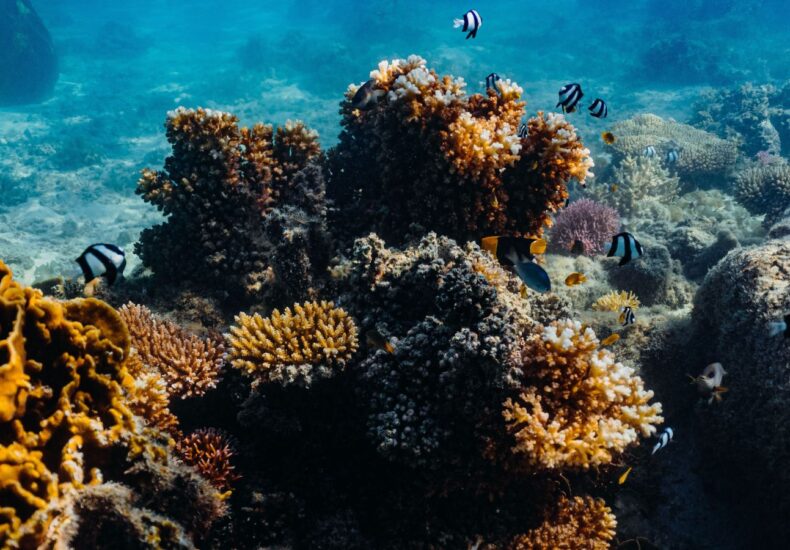
Exploring Reef Resilience Through the Science of Coral Adaptation
Fundacion Rapala – Coral reefs are among the most breathtaking and valuable ecosystems on Earth. They harbor a quarter of all marine life and sustain over a billion people by providing food, income, and protection from coastal erosion. But these colorful underwater cities are under siege. Climate change, overfishing, and pollution are pushing them to their limits.
At the Coral Reef Alliance (CORAL), scientists believe coral reefs can still thrive — but only if we nurture the natural systems that make them resilient. This is where the science of reef resilience comes into play — a vital framework for protecting coral reefs and the communities that depend on them.
What Is Reef Resilience?
Reef resilience is the ability of a coral reef to resist disturbances, such as rising ocean temperatures, and bounce back from damage. Think of it like a human immune system: a resilient person recovers faster from illness, and a resilient reef can recover from stress and keep supporting marine life.
But resilience doesn’t happen by accident.
It is shaped by biological diversity, good environmental conditions, and the reduction of human stressors. When local threats like pollution and overfishing are minimized, coral reefs are more likely to survive and even thrive despite warming oceans.
How Do Coral Reefs Adapt to Change?
Adaptation is the natural ability of organisms to survive environmental shifts. For coral reefs, this means relying on genetic diversity. Some coral species are naturally more heat-tolerant than others. When reefs are genetically diverse, the chances increase that some corals will survive bleaching events.
These survivors pass on their heat-resistant genes to future generations. Over time, this process leads to coral populations that are better suited to warmer seas. But this doesn’t happen in isolation. Ocean currents help by carrying coral larvae to other reefs. Well-connected reefs allow genetic traits to spread, enhancing survival across regions.
Supporting Adaptation Through Reef Connectivity
CORAL’s research shows that safeguarding genetically connected reef systems can significantly increase survival rates. When corals in warm regions share larvae with cooler reefs, they help their neighbors prepare for the future.
This gene flow creates a natural buffer. It means some reefs will already contain heat-tolerant corals by the time temperatures rise. Strategically protecting these networks enhances resilience without requiring human intervention like coral farming or genetic modification.
Local Conservation Has a Global Impact
Climate change is a global problem, but local conservation efforts are essential to reef survival. When reefs are also battling pollution, sedimentation, and overfishing, their ability to recover from bleaching drops dramatically.
Healthier local conditions support coral regrowth, reproduction, and overall resilience. This means that communities and conservationists can make a real difference — even without solving global warming overnight.
1. Reducing Overfishing to Restore Balance
Herbivorous fish such as parrotfish and surgeonfish are essential allies in reef health. After bleaching, algae can quickly overrun dead coral. These fish graze on algae, keeping it in check and allowing coral to grow back.
Protecting these fish isn’t just about preserving biodiversity. It’s a direct investment in reef recovery. Overfishing removes this balance, making it harder for corals to reestablish. Supporting sustainable fishing not only benefits reefs but also secures food sources for local communities.
2. Improving Water Quality for Coral Growth
Land-based pollution — from sewage, agriculture, and urban runoff — clouds coastal waters. It blocks sunlight and brings harmful bacteria. Clear, clean water is crucial for coral reproduction and survival.
In Hawai‘i and Honduras, CORAL works with communities to restore native vegetation and improve wastewater treatment. These projects reduce pollutants entering the sea and give coral reefs a cleaner, safer habitat in which to grow.
The Power of Connected Reefs
Reef connectivity is one of the most powerful tools in conservation. Some areas already host heat-tolerant coral. By protecting these “hot reefs” and ensuring they’re linked to other areas, scientists can help spread their genetic advantage.
This approach includes:
- Identifying diverse and heat-tolerant reef systems
- Reducing stressors like pollution and overfishing across the network
- Advocating for policies that protect these natural corridors
By linking reefs together, we build a system where resilience can grow stronger over time — not just in isolated patches, but across entire regions.
Why CORAL Chooses Science Over Shortcuts
At the Coral Reef Alliance, the strategy is simple yet powerful: protect existing coral ecosystems rather than engineer artificial solutions. This people-focused approach means empowering local communities with the tools and knowledge they need to care for their reefs.
CORAL provides training, funding, and scientific modeling to help identify where conservation will have the most long-term impact. Their belief is clear — reef resilience starts with real people doing real work on the ground.
The Takeaway: Coral Reefs Can Still Be Saved
Despite the grim headlines, coral reefs are not doomed. They are living, breathing, adapting systems. If we reduce emissions and protect the conditions that allow reefs to adapt, these ecosystems can survive the climate crisis.
By combining cutting-edge science with grassroots action, we give reefs a fighting chance. And that’s what CORAL is working toward every day — a world where coral reefs continue to thrive and support life.
How You Can Help Coral Reefs Thrive
You don’t need to be a marine biologist to make a difference. Here’s how you can support reef resilience right now:
- Donate to or volunteer with reef-focused organizations like CORAL
- Reduce your carbon footprint by using less energy and choosing sustainable transport
- Avoid harmful sunscreens with chemicals like oxybenzone
- Support policies that protect clean water and marine biodiversity
- Choose seafood from sustainable sources to reduce pressure on reef ecosystems
Every decision you make ripples outward. When you act to protect coral reefs, you contribute to a healthier planet for everyone.